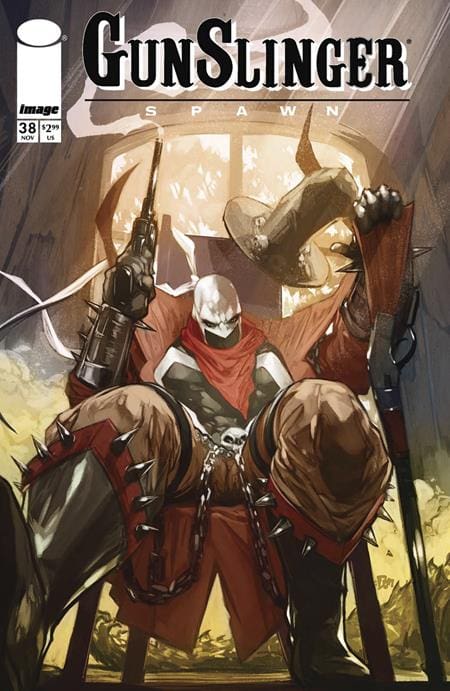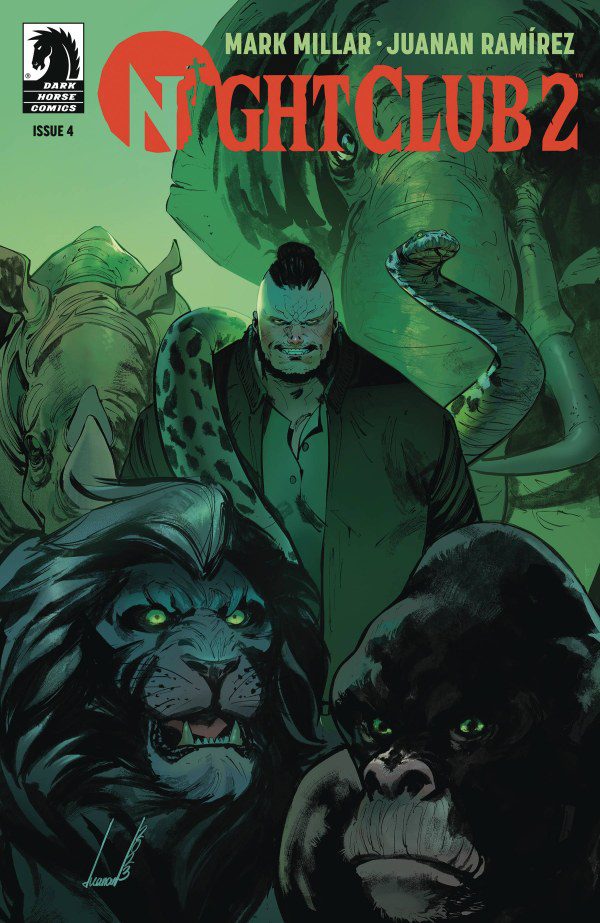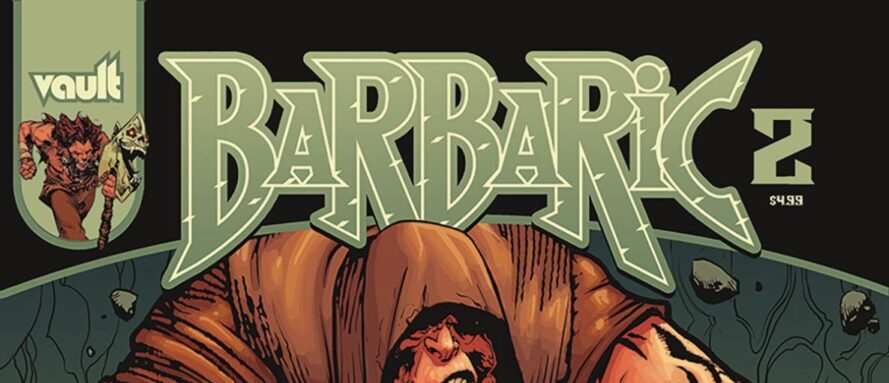
REVIEW: Lone Wolf 2100 #4
Occasionally I feel bad as a reviewer because I have to review an issue of the comic in the middle of a story, without being able to first read the previous issues. It really limits my options as a reviewer, and I feel bad because I feel like I can’t do justice to the series. However, every now and then there is an absolute gem of a writer who manages to master non-linear time, taking us back and forth through the story so we can learn about what’s happened with enough prowess to bless the reader with an emotional attachment and working knowledge of the story. Eric Heisserer, is one such writer.
This week I was reviewed issue #4 of the Dark Horse series Lone Wolf 2100. The series is set in the future when an infection has caused its victims to become flesh-eating monsters. A little girl, Daisy, possesses the cure for the ailment within her blood, and her robot bodyguard Itto, has to get her to representatives of a company who want to make the cure widely available, while protecting her from agents of a rival company who wish to profit from it.
This, is simply what you get when you read Heisserer’s very helpful introduction to the series. It’s something that goes quite amiss is this introduction, and either doesn’t get written or is extremely brief with nowhere near enough information. Whereas Heisserer’s gives us enough information to know who is good, who is bad, and who we’re allowed to love. I was incredibly impressed with just how relevant the intro was, and how much it impacted my reading.
From the first panel, it’s clear that we’re dealing with the bad guys working on their counter-plan against Itto and Daisy, and as it’s put into place, feelings of shock and anticipation and adrenaline in the ensuing battle are all genuine and heart-felt ”“ even as someone who hasn’t read the rest of the series, I felt a strong connection to Itto and Daisy not only as the main protagonists, but as what they’re tasked with. I was amazed at how quickly I’d developed an emotional connection to these characters, purely through the use of skilful writing that very quickly reinforced who was good, and who was bad.
Something I make a point of mentioning in reviews is the use of dialogue. It is common for writers to become caught up in the story, or simply suffer a lapse in inspiration and revert to an old cliché. While there are one or two moments within Lone Wolf 2100 where the dialogue feels “typical”“, the majority of it is incredibly natural, organic and entertaining to read.
The art is simply wonderful. Solid colouring, impeccable character design and shading technique. It all flows nicely together, is easily readable and simply gorgeous to look at.
One thing I would criticise would be an apparent lack of pacing. Events that would have had profound depth are rendered emotionless or awkward to read by a lack of panels, making every poignant moment seem like a sudden happening, a simple link in a huge chain of events when in fact it should have been a golden link. However there is only so much that can be done within the limited scope of 4 issues, and what Heisserer’s writing achieves is a simply well-written, well-conceived story with incredible dialogue and wonderful visuals.
However the main thing that made me fall in love with this comic from the final issue, as mentioned in the introduction, was it’s use of non-linear time. It wasn’t just the introduction paragraph to the comic that allowed me to become immersed in the world of Lone Wolf 2100, but the fact that the story kept jumping back and forth through the story’s timeline to reveal the events that lead up to where we are in this issue. Non-linear time is difficult to write, but Heisserer’s handling of the topic is incredibly skilled, and it’s not jarring at all.
Writing this emotively is impressive. When you can emotionally engage an audience and have the story deeply affect them, despite the fact they came in at the last issue, then that is truly a sign of talent. Eric Heisserer, coupled with the artistic talents of Miguel Sepulveda (line art) and Javier Mena (colours) creates a truly wonderful story that is intriguing, interesting, emotionally charged and simply incredible to read. 4.5/5
[yasr_overall_rating size=”large”]
Writer:Â Eric Heisserer
Artist:Â Miguel Sepulveda
Colorist: Javier Mena
Cover Artist:Â Brian Kalin O“Connell








